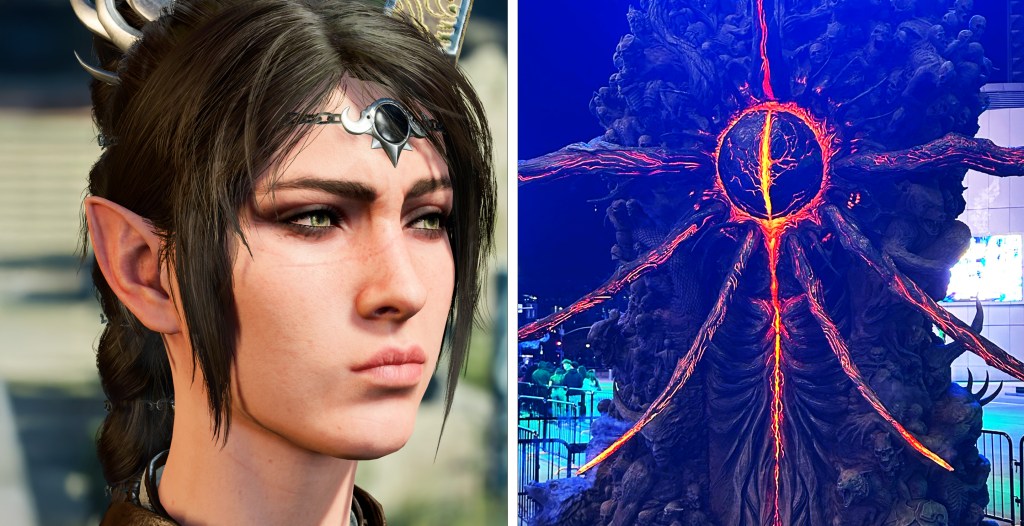Being an emo in the mid-2000s was intense. Not only were our fringes so heavy we could barely see, but we also paid a lot of attention to social divisions. Unlike now, when teens are more into streetwear than subculture, you were either an emo or a normie. You either listened to My Chemical Romance or Justin Timberlake. Which is why I’d have never envisioned myself as I am now: a twenty-something who still wears a lot of eyeliner, but is so deep into K-pop that my great-aunt sends me newspaper cutouts about BTS in the post from Brazil.
I’m not the only one. When I first started getting more involved in the online K-pop fandom, I noticed many others like me: former emos who’d built friendships through MySpace and Panic! At the Disco fanfiction comment sections, and are now obsessed with K-pop. Turns out, something about these two seemingly disparate genres seems to bring the same sort of people together. Lean in closer, and you start to see links between not only their devoted fans, but the music’s emotional appeal and theatrics that toy with strict gender norms.
Videos by VICE
“Both are genres just enough outside the mainstream that you have to be ‘intentional’ about being in the fandom, but close enough to the mainstream that there’s a sense of community around them,” suggests Kristen, a 26-year-old BLACKPINK fan from the US who spent her high school years listening to Evanescence, Linkin Park and Panic! At the Disco. I know what she means – emo may have been considered alternative by people’s dads, but bands like Fall Out Boy and My Chemical Romance still graced the covers of teen magazines. They were ‘alt’ enough to appeal to certain teens, but marketed heavily enough to have huge, dedicated fandoms.
While the energy of these fandoms are definitely a key uniting factor between the two genres, fans I speak to also pinpoint an attraction to the emotional honesty of both genres. They bring up emo’s open expression of sadness and anger, and K-pop’s capacity for fostering self-esteem and friendship. Late SHINee star Jonghyun’s song “End of a Day”, BTS’ message of self-love, as well as BTS member Suga’s mixtape, Agust D – featuring a track where Suga openly addresses his own experiences with mental health – all come up.
“The kind of catharsis I felt listening to “The Last” by Suga is the same as how I felt as an angsty and definitely-depressed-but-in-denial teen listening to My Chemical Romance,” says Becca, a 28-year-old BTS fan from the UK. “There’s something very honest and open and vulnerable about a lot of BTS’s music, even when it’s also fun and great to dance to. I think that’s what drew me in.”
I can relate. I discovered K-pop as a young adult during an extremely difficult time in my life, and the genre was partially responsible for getting me out of a deep depression simply because it made me care again. Multiple fans speak passionately of how much their favourite K-pop groups help them feel better when things seem purposeless. This is something emo did for years.
But while the checked sweatbands and dubiously acquired piercings are mostly long gone, not too many twenty-something fans have completely moved on from the melodramatic darkness of our teen hearts. In fact, most of us seem to have shifted the focus of our passion. “By the time I got into K-pop, I had moved on from emo in the way a lot of people my age have, which is to say: it’s always lurking,” Becca says. “I might have been listening to a lot more contemporary music and a lot more pop than I used to, but let me hear the opening note of ‘Black Parade’ or the chorus of ‘I Write Sins Not Tragedies,’ and will be belting my absolute heart out.” We know that people’s music tastes are cemented during formative adolescence, so it makes sense that emo remains a key part of some K-pop fans’ life now.
“Emo allowed me to wallow in the pain of my teenage years, while K-pop provides a welcome distraction from adulthood and a sense of hope and optimism,” says Tori, a 27-year-old BTS stan from the US. “Emo had its place in my life, but the world is scarier as an adult. We need to be reminded of the little happy things.”
Some of that happiness stems from how theatrical both genres can be, from narrative-based music videos to intricate outfits. Nothing better exemplifies this than the parallels between My Chemical Romance and BTS, who are both mentioned by a lot of the people I speak to. If you were there, you’ll remember that throughout My Chemical Romance’s discography, fans were taken on different narrative journeys according to each album, went from tackling life-and-death questions with “The Black Parade” to the fun of the post-apocalyptic “Killjoys”.
Similarly, for the past couple of years, BTS have been using their tracks, videos, and even a comic book to take fans on a very complex ride (complete with time travel), where they explore their own experiences of growth, youth and self-love. The storyline is so complicated that it’s still left fans with wild unconfirmed theories, even when they’ve been reading into it for ages. (Best of luck, guys.)
“Growing up going to emo shows, I’ve come to expect a certain element of drama and passion from a band that you don’t generally see in Western pop groups,” Tori says. “There are also similarities with male artists experimenting with their looks. It seems crazy to me to hear criticism about idols wearing makeup, because we grew up with men with long hair and heavy eyeliner. As an enormous AFI fan, I’m used to Davey Havok wearing glittery blue eyeshadow and false lashes.”
She’s right. A play on gender expectations – particularly among male idols – is a common thread tying K-Pop and emos together. Just look at the boys of seven-piece group Monsta X strapped into leather harnesses on live TV; at boy band EXO bruised and pierced in their “Monster video; at solo act Ravi’s subtly-smudged eyeshadow and eyeliner paired with tons of fake tats in his “BOMB” video.
Most of us who were LGBTQ+ teens in the early 2000s still remember the implications of the term ‘guyliner’ and how emo was often held responsible for the mainstream frisson around bisexuality. The K-pop world’s connection to LGBTQ+ identity is a little more complex, but the genre has undeniably become something of a safe haven for some queer teens and young adults – a space in which they can revel in androgynous looks, tight jeans and high-concept music videos.
Ultimately, the shift from emo to K-pop shows that our fandom grew up with us: from angsty teenagers who wanted to feel and hear our sadness sung out while writing poetry in our bedrooms, to young adults who have learnt that enjoying things isn’t so bad and that, sometimes, the way to fight the sadness is through tight choreography.
More
From VICE
-

Screenshot: Larian, X @shinobi602 -

Gene Siskel and Roger Ebert (Photo by Norm Staples/Getty Images) -

One of the finalists, "Now Which Direction Is My Nest?" (Credit: Alison Tuck) -

Credit: Google
